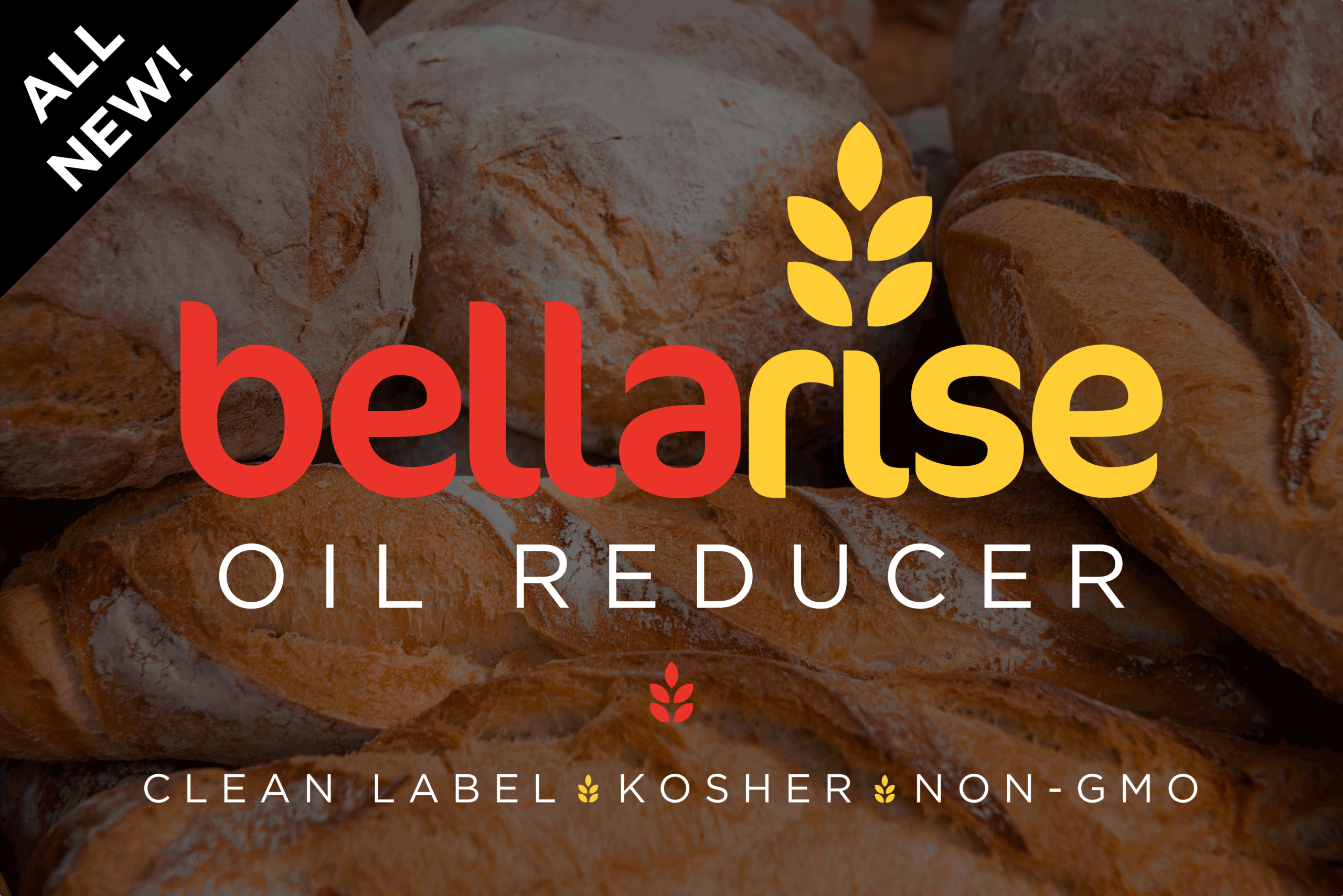PASADENA, CA, 29 April 2019 – OK, so we’re all familiar with the most popular of baker’s yeasts, including instant dry yeast, but what is semi-dry yeast? And most importantly, what can it do for you and your commercial bakery’s unfermented frozen (UFF) doughs?
A heck of a whole lot, that’s what.
So, what is semi-dry yeast? Michael Heimink, Technical Applications Manager here at Bellarise®, explains. “Always non-GMO and clean label, Bellarise® Semi-Dry Yeast is designed to extend the freezer shelf life of unfermented frozen bakery products by up to 6 months.” As with all Bellarise® yeast, our semi-dry yeast is produced with pure beet molasses, ensuring that bakers can use an authentic yeast that – unlike yeasts made elsewhere – is not fed high-fructose corn syrup. During production, semi-dry yeast becomes dormant after undergoing a special freezing process, and should be kept frozen while in storage in order to preserve its freshness and gassing power.
By being in a frozen, dormant state, Bellarise® Semi-Dry Yeast exhibits a much longer shelf life than any cream or compressed yeast on the market (SDY’s optimal performance is spread over 2 years, versus a very compact lifespan of just 2 or 3 weeks for cream and compressed yeast). This, in turn, makes semi-dry yeast easier to use, since it does not suffer from the inconsistent performance (in terms of gassing power) seen in cream or compressed yeast in UFF doughs, and is much easier to handle and simplifies the supply chain. At in-store bakeries, fast-casual restaurants, and wherever frozen doughs are used, semi-dry yeast eliminates the unnecessary costs associated with waste resulting from rapid product obsolescence often seen with highly volatile cream or compressed yeast. Those yeasts are easily given to tampering and degraded performance arising from a short shelf life and strict handling requirements, which are non-factors when working with semi-dry yeast.
Frozen doughs using Bellarise® Semi-Dry Yeast yield a much longer – and more consistent – shelf life than doughs using cream or compressed yeast. “Unlike most other yeasts, SDY is manufactured to withstand the freezing process, and maintains the gassing viability of yeast-raised items without compromising the product’s performance,” says Heimink. Studies performed at our Baketech Innovation Center show that proof times are also significantly improved when using semi-dry yeast.
In our tests comparing proof times for an industrial bakery’s doughs using both semi-dry yeast and cream yeast versus those using only cream yeast, introducing semi-dry yeast and reducing the cream yeast use rate made proof times 75% more consistent. “We have successfully used our SDY to replace 100%, 50% & 33% of cream yeast in our customers’ breads. This kind of flexibility allows our customers to continue employing their current cream yeast delivery system if they want, yet still offers them a viable solution to the typical gassing power degradation they experience in UFF products.”
In the same test, Italian sandwich rolls using Bellarise® Semi-Dry Yeast required 15% less time to reach the template’s height/volume. Once out of the oven, Italian rolls show a more uniform and consistent crumb structure when using SDY, and an even, rich crust that looks like it’s ready to house the heartiest of sandwiches. Structurally, they also showed no keyhole effect (i.e. no collapsing of its sidewalls) and kept their proper form, unlike doughs that used only cream yeast.
Benefits ranging from enhanced machinability of a dough, to increased yield, round out the list. Heimink adds, “With SDY, you see less stress in the dough. This equates to a kinder, gentler machining / moulding of the dough. We often see that this leads to more precise scaling and a shrinking or decreasing of the scaling weight range variable. In the end, it provides a greater yield, which equals more profit per batch.”
Heimink’s final point is essential. “Process and recipe are everything. Everyone’s process is different, so it’s important for baking ingredient producers to learn how a bakery produces its breads before you can actually help. That conversation is irreplaceable,” he says with certain emphasis. And, you know what? He’s right!
Across the board, semi-dry yeast helps industrial and commercial bakers overcome a number of challenges. Croissants, Pullman loaves, Italian rolls, French bread and other trending breads saw major improvements when using semi-dry yeast, as well, further proving SDY’s utility and benefits.
All in all, Bellarise® Semi-Dry Yeast can be an industrial bakery’s secret weapon when crafting the US bread market’s coolest breads. “Our SDY provides commercial bakers with a leavening system that produces more consistent gassing power than cream or compressed yeast in several breads,” Heimink states. Commercial and industrial bakeries can be more efficient, control the quality of their breads more effectively, reduce costs, simplify their supply chain and production process, and avoid the perils of rapidly-expiring cream and compressed yeast while preparing beautiful breads that rise to the bakery’s highest standards.
To learn more about how Bellarise® Semi-Dry Yeast helps industrial and commercial bakeries across a broad range of breads, send us a note via our website’s contact form! We would love to hear from you and talk shop!
Part of our commitment to providing unparalleled customer service is being ready to help bakers bake the best clean label, non-GMO, and organic breads in the world. Whether that involves providing active support in the lab and during line trials, or taking a phone call at any time, we take our customers seriously and rise to a higher standard for their success. Contact us and let our Product Development Department know about your clean label goals and challenges. We would gladly partner with you to find the right solutions and support your bakery’s efforts to craft the very best clean label breads in the market.







